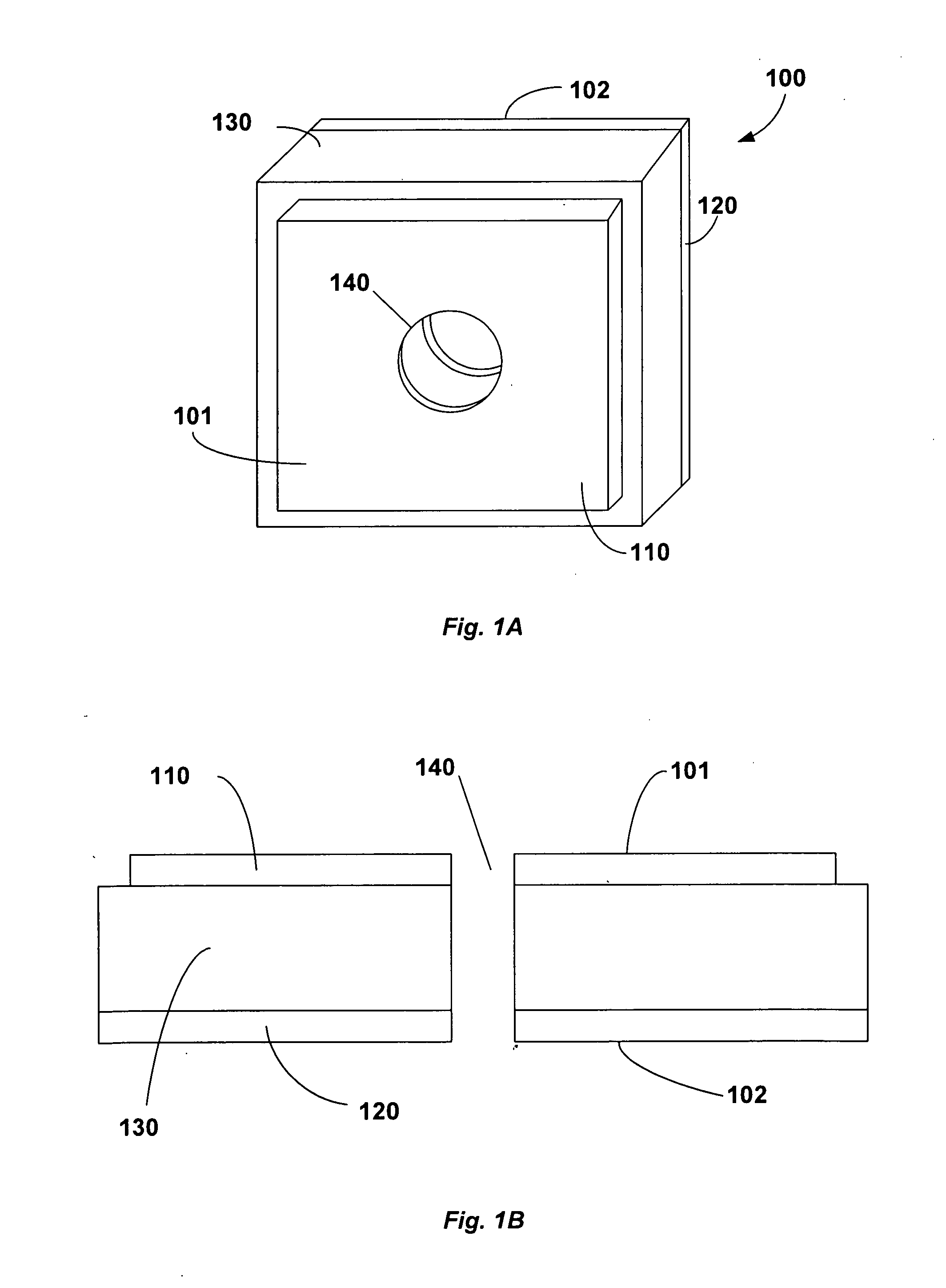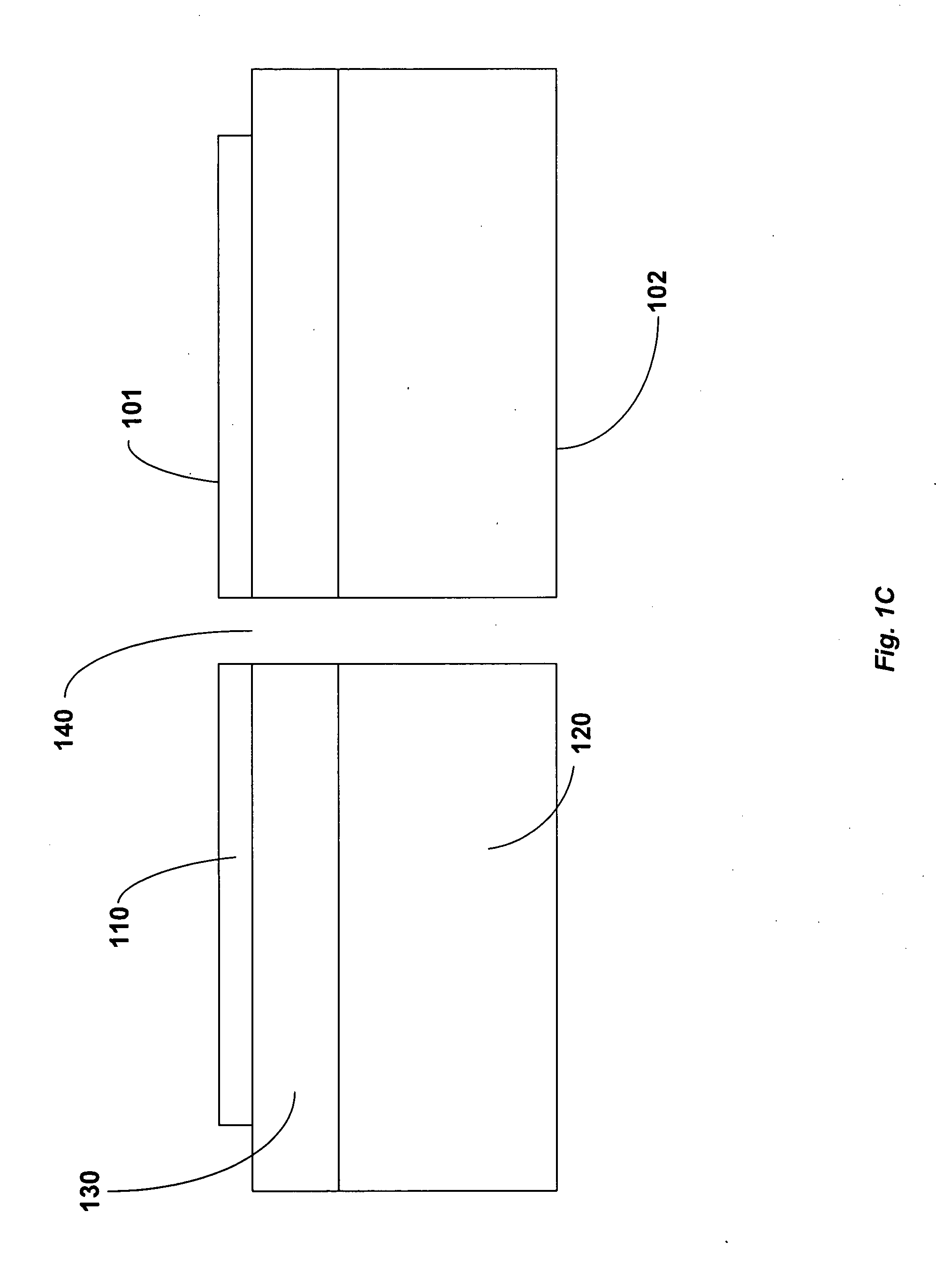System and method for spatially-resolved chemical analysis using microplasma desorption and ionization of a sample
a microplasma and sample technology, applied in the field of microplasma-assisted desorption and ionization, can solve the problems of further desorption and photo-ionization
- Summary
- Abstract
- Description
- Claims
- Application Information
AI Technical Summary
Benefits of technology
Problems solved by technology
Method used
Image
Examples
Embodiment Construction
[0035]Referring now in detail to the drawing figures, wherein like reference numerals represent like parts throughout the several views, FIG. 1A illustrates a frontal perspective view of an exemplary embodiment of a microplasma device. In all of the Figures, the microplasma device(s) and features thereof are not illustrated to scale. The Figures are intended to clearly illustrate all of the elements and their functional relationships, rather than actual relative proportions. The microplasma device 100 can comprise a first electrode 110 and a second electrode 120. The first and second electrodes, 110 and 120 can be separated by a dielectric 130. The microplasma device 100 can comprises a first side 101 and a second side 102.
[0036]The microplasma device 100 can further include an aperture 140. The aperture 140 can traverse the width of the microplasma device 100, forming a cylindrical channel through the first electrode 110, dielectric 130, and second electrode 120. The cross-section ...
PUM
 Login to View More
Login to View More Abstract
Description
Claims
Application Information
 Login to View More
Login to View More - R&D
- Intellectual Property
- Life Sciences
- Materials
- Tech Scout
- Unparalleled Data Quality
- Higher Quality Content
- 60% Fewer Hallucinations
Browse by: Latest US Patents, China's latest patents, Technical Efficacy Thesaurus, Application Domain, Technology Topic, Popular Technical Reports.
© 2025 PatSnap. All rights reserved.Legal|Privacy policy|Modern Slavery Act Transparency Statement|Sitemap|About US| Contact US: help@patsnap.com



